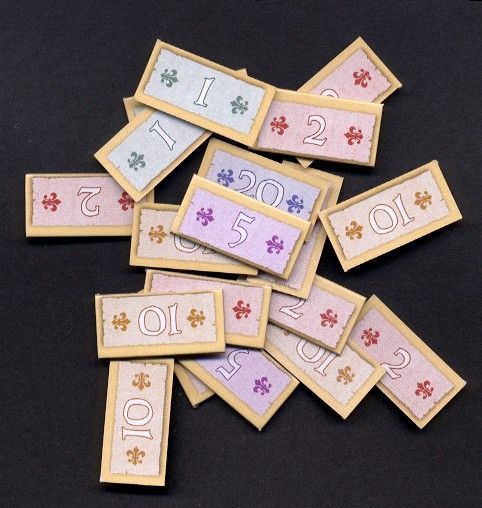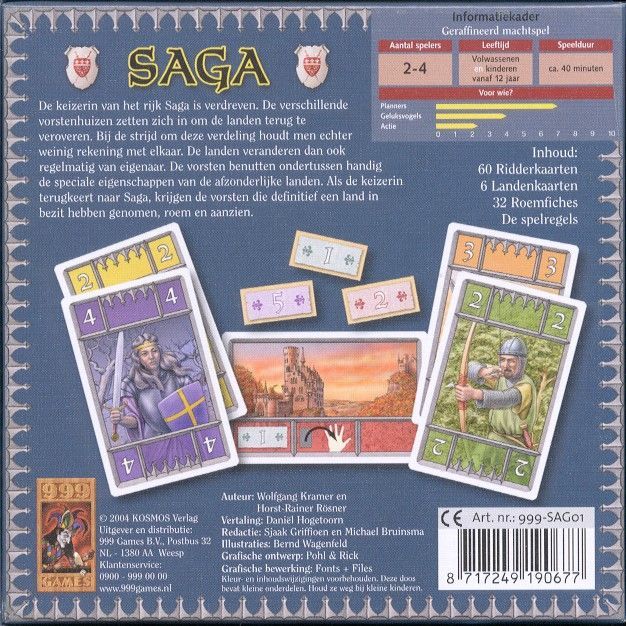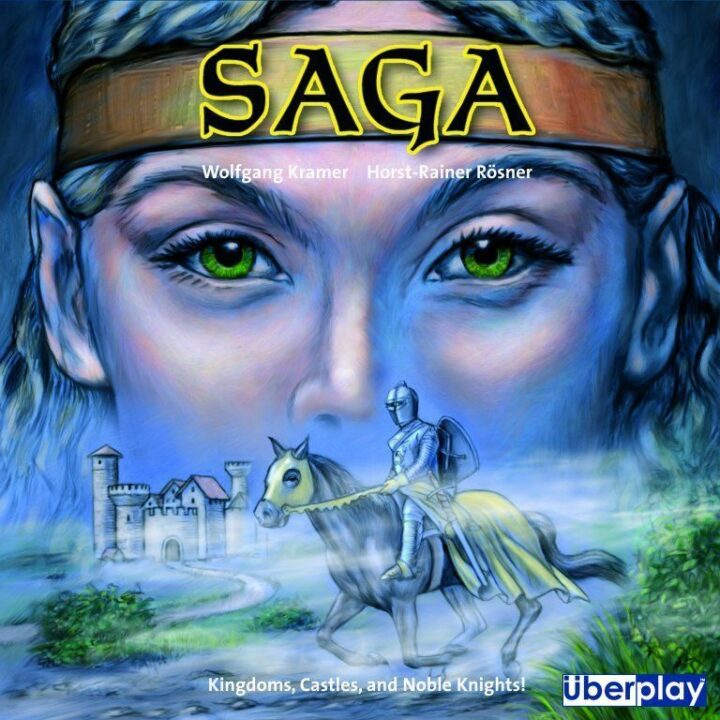Welcome, fellow board game enthusiasts! Today, we’re diving into the realms of Norse mythology with our review of “Saga.” Expect strategic gameplay, vivid artwork, and more Viking mischief than you can shake a horned helmet at. But, like Thor’s hammer, we won’t shy away from pointing out any cracks. We’ve gathered round the table, laughed, maybe even cried a little (thanks to my friend’s relentless Loki impersonations), and now we’re ready to spill the mead on all things “Saga.” Grab your runestones, and let’s get started!
How It Plays
Setting Up
To set up Saga, separate the game components based on factions. Each player selects a faction and takes their respective deck, tokens, and player board. Arrange the main board in the center, shuffle the event deck, and distribute starting resources. Players now place their faction’s miniatures on the designated starting areas.
Gameplay
Saga unfolds over several rounds. Each round, players draw cards, plan moves, and take actions like recruiting, battling, or advancing their storyline. The game uses an action-point system; players spend points to execute actions. Strategy and cunning plans are essential, as players vie for territory and resources. Player interactions evolve through diplomacy, alliances, or outright conflict. May Odin bless your dice rolls!
Winning the Game
Victory in Saga means achieving your faction’s unique objectives. These could involve controlling key territories, collecting specific resources, or fulfilling epic Norse sagas. When a player reaches their goal, the game ends and the winner is declared. If not, the game resolves through a point system – the player with the most points wins.
Want to know more? Read our extensive strategy guide for Saga.
Gameplay Mechanics and Balance in “Saga”
First off, “Saga” isn’t your typical board game. It’s like stepping into a time machine and landing in the middle of some epic showdowns. The mechanics revolve around tactical skirmishing, which might sound a bit like military training but is actually a lot of fun. You’re in charge of battles between historical factions, and let me tell you, the balance isn’t something to sneeze at. Unlike my failed attempt at balancing while on a skateboard, “Saga” actually gets it right!
The game uses a dice-based mechanic that made me nervous at first, considering my nickname during game nights is “Lucky No-More.” But the way it integrates skill and strategy with just a smidgen of luck is brilliant. Each faction has its own unique dice and abilities, which keeps everyone on their toes. Nothing’s more satisfying than outsmarting your buddy who thinks they have it all figured out – except maybe seeing them try to figure out why their faction’s abilities didn’t work as planned!
One thing to watch out for, though, is that learning the mechanics can feel a bit like trying to understand instructions for assembling flat-pack furniture. But once you get the hang of it, it’s smooth sailing. Balancing these mechanics is crucial for a fair game, and “Saga” mostly nails it, though there are times when certain factions might feel a bit strong. Still, it manages to keep everyone engaged and provides a rewarding experience.
Now, as we pack our dice away, let’s open the storybook and explore the theme and story immersion in our next section. Hang tight, adventure awaits!

Immerse Yourself in the Epic World of Saga
“Saga” is one of those board games that just pulls you into its universe like a tractor beam. Picture this: You’re a mighty Viking warrior, ready to conquer lands, trade with mythical creatures, or, as sometimes happens, trip over your own battle axe. The theme is deeply rooted in Norse mythology, which is a breath of fresh air from the wizardry and dragon tropes we see so often. Every game session feels like a Norse saga unfolding right before your eyes, with the storytelling evolving through various scenarios and missions.
One thing that really stands out is the attention to detail in the game’s components. The artwork? Absolutely stunning! It’s like each card and board piece tells its own tale, just waiting for you to uncover it. You can practically hear the war drums and the clash of swords. I mean, I even started saying “By Odin’s beard!” after a while, much to the confusion of my non-board gaming friends.
However, I did find that with so much rich storytelling, sometimes the theme overshadowed the gameplay. I almost got lost in the lore, which is fantastic for themed nights, but for some quick rounds, it might be a bit much. Still, I can’t deny the immersion factor makes “Saga” a memorable experience.
So, if you’re ready to travel back in time and conquer the Viking Age, “Saga” might just be your ticket. Next up, we’ll dive into how this game gets not just one, but all players involved like a Norse gathering around a campfire.

Immersive Player Interaction and Engagement in Saga
Ah, the joy of sitting around a table with your pals, ready to plunge into an epic game of Saga. Let me tell you, this game doesn’t just sit there staring at you like a sad Monopoly board—it calls you into action with its interactive gameplay.
One of the cool things about Saga is how it encourages players to outwit each other. Picture this: you’re plotting your next move, trying to figure out the best way to outsmart Bjorn, the Viking next door, while your friend across the table pretends he’s Thor, trying not to laugh because he just realized he left his hammer in the fridge. The mind games are real, folks!
The battle system in Saga allows you to engage with others strategically. Your choices matter and the back-and-forth banter is part of the fun. It’s not just about luck, but also a bit of tactical wizardry. Of course, it’s easy to get so wrapped up in your grand strategic plans that you forget your dog is trying to eat one of the game pieces.
Engagement levels peak as alliances are forged and shattered, friendships tested as you negotiate and sometimes kindly “suggest” what your buddy should do next. Every game of Saga feels like a new story, with different interactions unfolding each time—a never-ending tale of Viking glory and the occasional snack break.
Oh, and wait till you feast your eyes on the art and components of Saga; we’ll set sail on that next!
Component Quality and Artwork: A Closer Look at Saga
When it comes to board games, I have a soft spot for pretty bits and pieces, and “Saga” does not disappoint in this department. The first time I opened the box, it felt like Christmas morning, minus the eggnog and questionable sweaters. The components were solid and well-crafted, making me wonder if Thor himself hammered them out just for me.
The artwork is nothing short of a masterpiece. From the intricate designs of the characters to the stunning landscapes on the board, everything is a visual treat. If I could frame the cards and hang them on my wall, I would—but my spouse says we need to reserve the wall space for family photos. Priorities, right?
One of my friends, Taylor, who has a questionable obsession with Viking helmets, couldn’t stop admiring the detailed miniatures. They picked one up, declared it their long-lost ancestor, and proceeded to make tiny battle cries throughout the evening. We all had a good laugh, but it highlighted just how much the visuals enhance the Saga experience.
The only hiccup I found was that the boards can be a bit on the glossy side, making them prone to reflect light. During one game night, we had to adjust our overhead lamp more times than I care to admit. Despite this minor inconvenience, the charm of the components kept us hooked.
Overall, “Saga” is a visual feast with quality components that add to the immersion. If you’re a sucker for eye-catching artwork and sturdy pieces, this game won’t just be a joy to play—it’s a keeper for your collection.
Conclusion
After many battle-filled evenings with ‘Saga’, I can say it’s a solid game for those who love Norse mythology and strategic challenges. The game hooks you with its well-crafted artwork and fascinating factions, offering plenty of player interaction and engrossing stories. The glossy board can be a bit shiny, and the learning curve might intimidate beginners, but the rich experience it offers is worth the effort. The mechanics strike a fine balance, staying fair without leaning on luck, though it might overwhelm some with its depth. In a nutshell, ‘Saga’ is a great addition to any game night, bringing laughter, strategy, and sometimes heated debates to the table. Just keep an eye on that light source when setting up!


